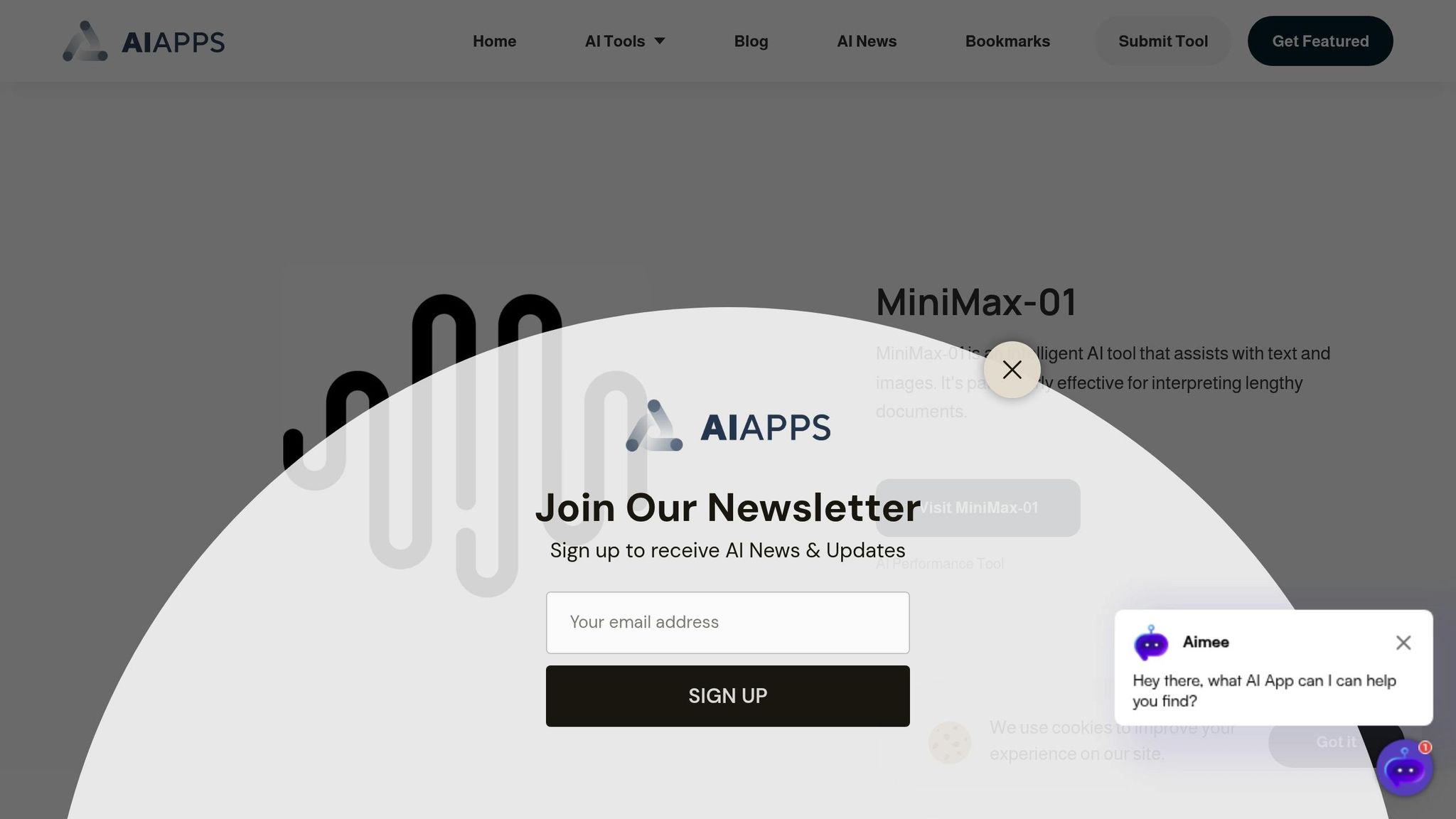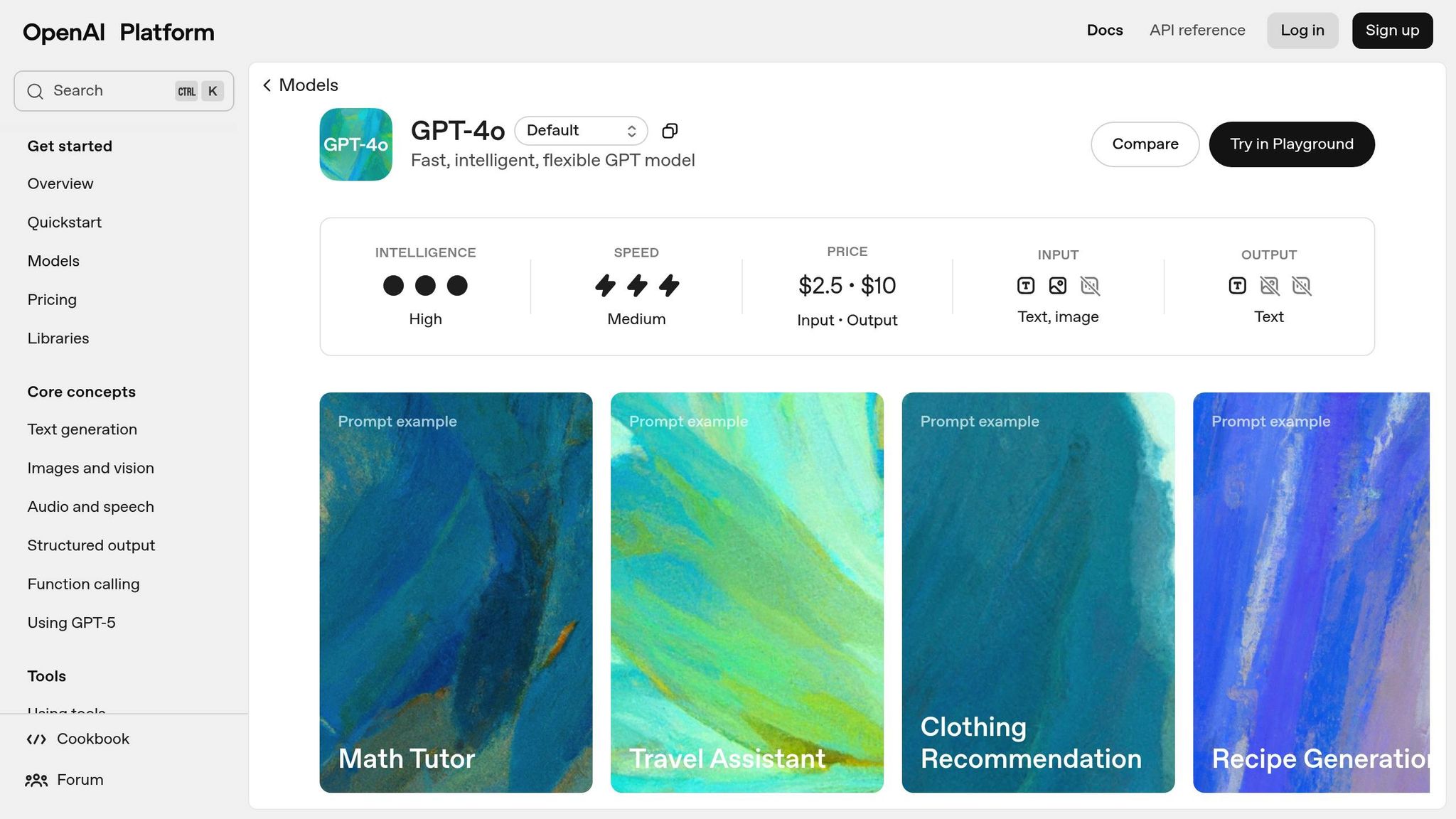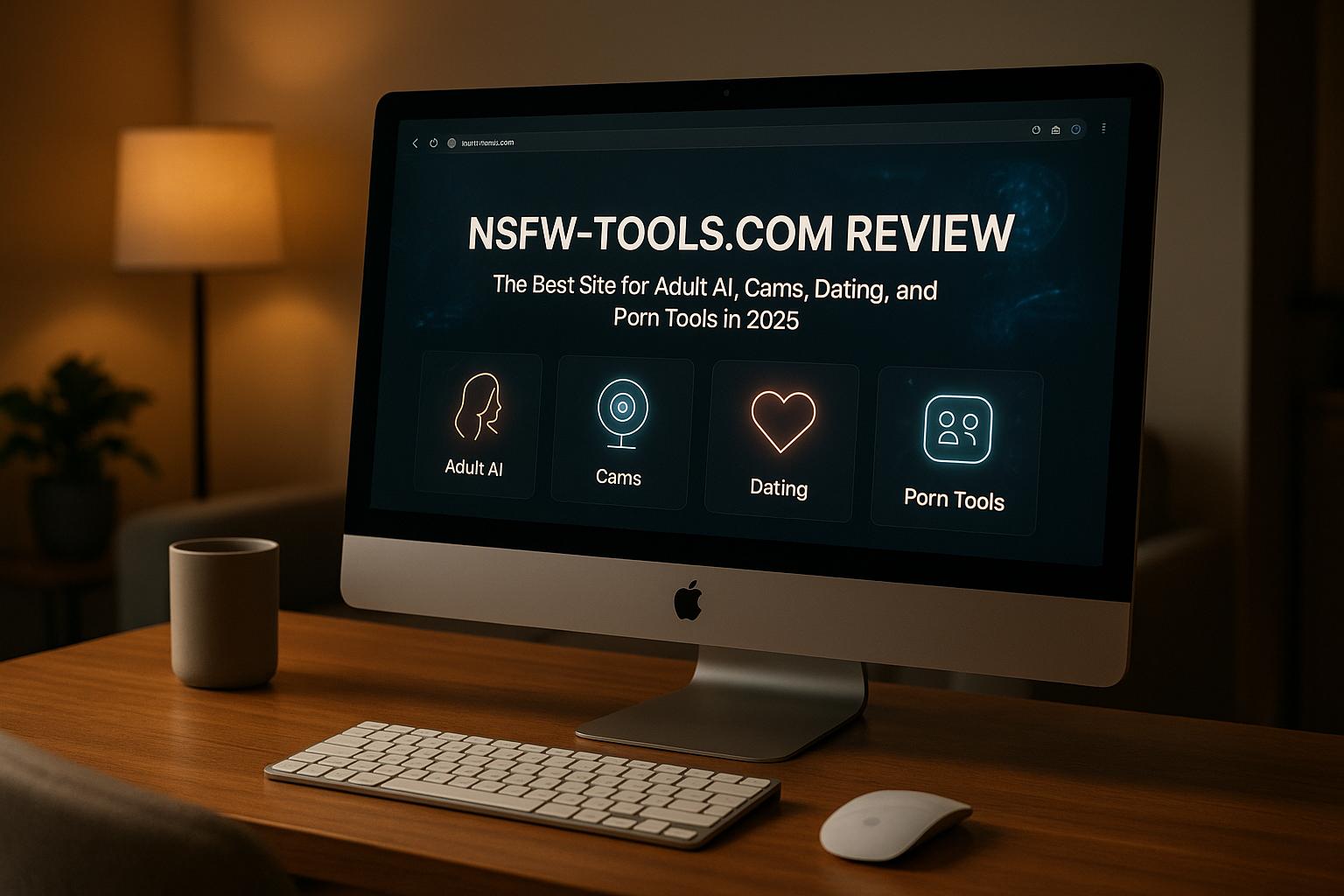MiniMax-01 outperforms Llama 3 and GPT-4o in handling long-context tasks. Its strengths include better retention of details across extensive texts, faster processing of large documents, and high accuracy in delivering coherent outputs for complex projects. While Llama 3 is reliable for shorter tasks and GPT-4o excels in creative writing, MiniMax-01 stands out for technical and analytical applications, making it the preferred choice for research, education, and content creation.
Key Takeaways:
- MiniMax-01: Best for managing large, detailed documents with high accuracy but requires more computational resources.
- Llama 3: Suitable for general tasks but struggles with very lengthy or specialized content.
- GPT-4o: Ideal for creative or narrative projects but less reliable for technical precision.
| Criteria | MiniMax-01 | Llama 3 | GPT-4o |
|---|---|---|---|
| Context Retention | Excels with lengthy, detailed text | Good for moderate-length | Strong in narrative tasks |
| Processing Speed | Moderate | Fast for shorter tasks | Competitive for long texts |
| Technical Accuracy | High | Adequate for general use | May require verification |
| Cost-Effectiveness | Higher cost for advanced tasks | Balanced | Mid-range for creative work |
MiniMax-01 is the ideal choice for professionals needing dependable performance in demanding, long-context scenarios.
MiniMax-01 DESTROYS ChatGPT ? - Opensource Model With 4M Context (Completely FREE with Vision)

1. MiniMax-01
MiniMax-01 is designed to handle extended texts while maintaining context, making it ideal for tasks that require detailed analysis over lengthy content.
Context Retention
This system excels at connecting ideas and information across long texts, ensuring summaries and analyses remain clear and coherent.
Processing Efficiency
MiniMax-01 can process large amounts of text quickly, simplifying the analysis of detailed documents and saving valuable time.
Accuracy in Extended Tasks
It synthesizes complex information into consistent and analytical results, making it reliable for handling intricate, long-form content.
Cost-Effectiveness
With its focus on resource optimization, MiniMax-01 helps cut costs when managing large-scale document processing tasks.
2. Llama 3

Llama 3 performs well with texts of moderate length but faces challenges when dealing with very lengthy documents, which can impact its consistency during extended conversations.
Context Retention
When working with moderately long documents, Llama 3 does a solid job of retaining context. However, as the text grows significantly longer, it struggles to keep track of all earlier details, which can lead to gaps in understanding.
Processing Efficiency
For standard tasks like summarizing meeting notes or analyzing feedback, Llama 3 operates efficiently. That said, its performance slows when handling multiple lengthy documents, making it less efficient in such scenarios.
Accuracy in Extended Tasks
Llama 3 is reliable at pulling key information and creating clear summaries for moderately long content. However, when tasked with more intricate or extended documents, the depth of its analysis can fall short, leaving certain complexities unaddressed.
Cost-Effectiveness
For tasks requiring moderate-length context, Llama 3 provides a cost-efficient solution. However, when tackling longer or more detailed tasks, additional processing might be needed, which could increase operational demands. These characteristics highlight how Llama 3 navigates the challenges of real-world applications involving extended content.
3. GPT-4o

Following the advancements set by MiniMax-01 and Llama 3, GPT-4o introduces a specialized approach to managing long-context processing. Designed to handle extended content seamlessly, it ensures context remains clear and coherent as text length increases - an essential feature in today’s AI-powered workflows.
Context Retention
GPT-4o performs well when it comes to retaining context across lengthy documents. It's particularly strong in creative and conversational tasks, where it keeps track of narrative threads and maintains coherence even in multi-chapter analyses. However, it can occasionally falter with highly technical documents, especially those requiring precise detail retention over hundreds of pages.
Processing Efficiency
The model processes long texts at a competitive pace, making it a practical choice for real-time applications and interactive document analysis. It also handles multiple queries across extended documents effectively. That said, processing times may stretch when working with complex technical content that demands deep analytical insights.
Accuracy in Extended Tasks
GPT-4o delivers reliable results for creative projects, educational materials, and conversational AI that involve lengthy contexts. It shines in maintaining a consistent tone and style throughout extensive pieces. However, when tackling specialized technical documents or research papers with intricate data, additional verification may be necessary to ensure accuracy.
Cost-Effectiveness
For organizations focused on creative content or educational applications, GPT-4o strikes a reasonable balance between performance and cost. On the other hand, for tasks involving intensive research or highly technical content, operational expenses can rise due to the computational demands of ensuring accuracy over extended contexts.
sbb-itb-212c9ea
Advantages and Disadvantages
After evaluating context retention, processing speed, and technical accuracy, let’s dive into the strengths and limitations of each AI model. Each one brings something different to the table, making the best choice heavily dependent on your specific needs.
MiniMax-01 shines when working with detail-heavy documents, offering exceptional context retention. However, it demands significant computational power, which can be a drawback for resource-limited setups.
Llama 3 provides balanced performance across a variety of tasks. It’s a dependable option for general applications, though it may struggle with highly specialized technical content.
GPT-4o is a standout for maintaining coherent and engaging narratives, making it ideal for creative tasks. However, for work requiring precise technical accuracy, additional fact-checking might be necessary.
| Criteria | MiniMax-01 | Llama 3 | GPT-4o |
|---|---|---|---|
| Context Retention | Excels with highly detailed documents | Reliable for general tasks | Strong in creative and narrative tasks |
| Processing Speed | Moderate due to detailed analysis | Fast and consistent | Quick, ideal for real-time interactions |
| Technical Accuracy | High for analytical and technical tasks | Adequate for most applications | May need verification for technical work |
| Cost-Effectiveness | Premium pricing for advanced capabilities | Balanced for value and performance | Mid-range pricing for creative tasks |
| Best Use Cases | Technical documentation, analytical work | Business reports, educational materials | Creative writing, conversational AI |
| Weaknesses | High computational resource requirements | Challenges with highly specialized content | Requires validation for technical content |
For specialized tasks, MiniMax-01 is the go-to for handling complex technical documentation. Llama 3 offers a well-rounded solution for organizations prioritizing reliability across general tasks. Meanwhile, GPT-4o is ideal for creative projects or scenarios where smooth narrative flow is essential. Choosing the right model requires weighing these trade-offs against your operational goals and budget.
Next, we’ll explore how these features come into play with MiniMax-01’s performance in real-world applications.
How MiniMax-01 Performs in Practice
Real-world testing demonstrates that MiniMax-01 delivers exceptional results in handling extended context tasks across academic research, educational development, and content creation. Let’s dive into some specific examples that highlight its strengths in these areas.
Academic Research Applications
In academic research, MiniMax-01 proves invaluable for processing lengthy texts while maintaining coherence and retaining critical details. This makes it particularly effective for conducting in-depth literature reviews and integrating diverse sources of information. Its precision in managing specialized terminology and complex methodological descriptions has been a game-changer for scientific documentation, ensuring clarity and accuracy in technical writing.
Educational Content Development
In the education sector, MiniMax-01 is widely used to design structured curricula. It ensures thematic consistency across various materials, whether it’s textbook chapters or multi-module course outlines. For standardized test preparation, the model’s ability to analyze details allows educators to craft practice questions that closely resemble formal exam formats, providing students with realistic and effective study tools.
Content Creation Workflows
For content creators tackling long-form projects, MiniMax-01 stands out by maintaining narrative flow and technical consistency throughout extensive documents. Technical writers benefit from its ability to manage cross-references and ensure details remain accurate across sections. Additionally, brand teams leverage the model to maintain a unified brand voice, seamlessly adapting tone and style to fit different segments of their content.
Performance Metrics in Extended Sessions
Beyond specific use cases, MiniMax-01’s performance in prolonged sessions demonstrates its reliability. During extended editing cycles, the model consistently integrates revisions without losing track of earlier changes. Its memory efficiency ensures smooth handling of iterative updates, while stable processing speeds help teams manage workflows effectively and meet tight deadlines with confidence.
These real-world examples underscore MiniMax-01’s practical strengths, offering a clear picture of how it excels in professional environments that demand precision, consistency, and adaptability.
Conclusion
MiniMax-01 stands out as a strong contender in long-context AI tasks, showcasing impressive capabilities across various applications like academic research, educational materials, and technical documentation. Its standout features - reliable context retention, fast processing, and high accuracy in extended tasks - place it ahead of competitors like Llama 3 and GPT-4o in challenging scenarios.
To achieve the best results, it's important to match the model's strengths to the specific needs of your workflow. Testing in practical settings and gathering user feedback are crucial to confirming its effectiveness in real-world, long-context use cases. With its proven performance, MiniMax-01 is well-suited for professionals seeking dependable and efficient long-context solutions.
FAQs
Why is MiniMax-01 the best choice for long-context AI tasks?
Why MiniMax-01 Excels at Long-Context AI Tasks
MiniMax-01 takes the lead in handling long-context AI tasks thanks to its massive context window - 20 to 32 times larger than what most models offer. This expanded capacity means it can process far more data in a single pass, making it perfect for tasks that demand retaining and analyzing extensive amounts of information.
What truly sets MiniMax-01 apart is its use of advanced token routing technology. This system ensures that information is directed to the most relevant processing units, enhancing both its efficiency and speed. The result? A model that scales effortlessly and performs exceptionally well, even in demanding use cases like research, education, and content creation.
With these capabilities combined, MiniMax-01 delivers a level of accuracy and dependability that makes it the preferred choice for tackling extended-context challenges.
How does MiniMax-01 achieve exceptional accuracy and retain context across long documents?
MiniMax-01 stands out for its ability to maintain accuracy and context across lengthy documents, thanks to its hierarchical memory system and hybrid attention mechanisms. These cutting-edge features allow it to process up to 4 million tokens, ensuring even the most extensive texts are handled with precision and fluidity.
This means MiniMax-01 can effortlessly manage complex or lengthy documents, keeping essential details intact and delivering consistent, reliable results. Whether you're tackling research papers, educational materials, or content creation projects, MiniMax-01 ensures clarity and context remain intact from start to finish.
What are the cost benefits of using MiniMax-01 for processing large documents?
MiniMax-01 stands out as a budget-friendly option for large-scale document processing. With rates set at $0.20 per million input tokens and $1.10 per million output tokens, it offers a lower-cost alternative compared to many competing models. Plus, its capacity to process up to 4 million tokens in a single task eliminates the hassle of breaking down jobs, which can further save on computational costs.
This combination of affordability and high capacity makes MiniMax-01 a smart choice for businesses and organizations dealing with extensive document workflows, delivering reliable performance without breaking the bank.



